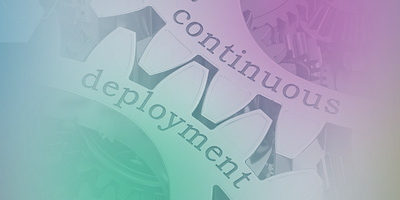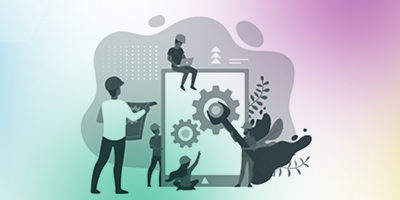- Program
- Program
- Program
- Program
- Program
- Schedule
- Business & Company Culture
- Cloud Platforms
- DevSecOps & Cloud Security
- Containerization & the Kubernetes Ecosystem
- Continuous Integration & Continuous Delivery
- System Design & Software Architecture
- Observability & Service Mesh
- Kubernetes Bootcamp
- DevOps Transformation Day
- Speakers
- More Program
- Program
- Tickets
- Tickets
- Tickets
- Tickets
- Tickets
- Tickets
- Conferences
- Formate
- Inhouse
- Blog
- Info
- DevOpsCon
- Downloads
- Sponsors & Expo
- Info
- Camps
- Editions
- Jetzt anmelden
- Register Now
- Register now
- Register Now
- Register now
- Register now
- Register Now
Nov
9,
2022
Software that stands the test of time is only as good as the process to build and maintain it. From ideation to maintenance, the processes should be understood and documented across your team, so that everyone works in the same way. The challenge here is how to define the process...
Oct
4,
2022
The first part of this article series dealt with the fundamental question of what culture is, how culture can be understood, and what impact culture has on the way we work in an organization. After this stocktaking, the second part deals with the question of how culture can be actively...
Sep
6,
2022
Agility has long been a topic in organizations of all sizes. In an environment of increasing complexity, agility can become a key competitive advantage. It's no wonder, then, that companies want to use agile frameworks to organize knowledge work. However, introducing techniques is not enough. Becoming truly agile as an...
Jul
19,
2022
Continuous delivery and infrastructure as code are mainstream, right? At least, many claim to practice it. If you don't do it, you're out - or at least falling behind. So taken to its logical conclusion, we should see a huge improvement in delivery speed in our IT world - and...
Jun
21,
2022
Kanban is an agile alternative that’s been receiving more and more attention in software development lately. Praised for its flexibility and simplicity, this method is known for the fact that instead of focusing on maximum utilization, it optimizes flow—the flow of work. We spoke with Agile coach Thomas Schissler about...
May
10,
2022
Scrum has become a symbol of enterprise agility. Agility and scrum are often used synonymously. But anyone who does Scrum is not automatically agile, even though the framework can serve as a path to agility. Strict adherence to the Agile Manifesto’s values is much more decisive.
Apr
20,
2022
Companies often have an extensive application landscape. Nevertheless, there’s often a desire or need to regularly put new versions of the products into production, either to deliver new features or to close security gaps. This article presents prerequisites for continuous deployment using a roadmap. We will address the challenges of...
Mar
15,
2022
When talking about successfully implementing software projects, Scrum as a framework paired with agile development is the current state of the art. You almost feel transported back to your teenage years, listening to schoolyard conversations about “the first time”. The comparison with agile development using Scrum isn’t so far-fetched. Everyone...
Feb
22,
2022
In this tutorial, we want to build a complete Angular web application using Azure DevOps. The road will lead us through setup, YAML pipeline, Docker provisioning, and finally, creating the build content in Stages.
Dec
14,
2021
In the previous article "Scrum - an introduction for developers", we briefly addressed the topics of product backlog and user stories. We explained that an assessment of requirements with regard to scope and complexity is also necessary for agile product development. This article will go into this in more detail....
Stay Tuned:
Explore other Tracks
Business & Company Culture
Navigate the Human Side of DevOps.
Cloud Platforms
Scale Your Cloud Apps with Terraform, Serverless & beyond.
DevSecOps & Cloud Security
Secure DevOps from code to cloud with shift-left practices and AI.
Containerization & the Kubernetes ecosystem
Kubernetes: from fundamentals to advanced edge deployments.
Continuous Integration & Continuous Delivery
Automate Your Processes: Build High-Performance CI/CD Pipelines.
System Design & Software Architecture
Build scalable microservices with cutting-edge tools and patterns.
Observability & Service Mesh
Discover how tools like Grafana, Cilium, and OpenTelemetry can transform app data.
GET DEVOPS NEWS AND UPDATES!
Join our community and stay up to date!
GET DEVOPS NEWS AND UPDATES!
Join our community and stay up to date!
GET DEVOPS NEWS AND UPDATES!
Join our community and stay up to date!
Unlock Exclusive Discounts & Free Recordings Today

Register for a free devmio Fullstack membership to secure:
 6 months access to session recordings.
6 months access to session recordings.
 $100 discounts on DevOpsCon New York tickets.
$100 discounts on DevOpsCon New York tickets.
 1 year unlimited access to devmio - the conference platform.
1 year unlimited access to devmio - the conference platform.
Sign Up today and get a taste of DevOpsCon New York! Free for a limited time.
GET DEVOPS NEWS AND UPDATES!
Join our community and stay up to date!
GET DEVOPS NEWS AND UPDATES!
Join our community and stay up to date!
GET DEVOPS NEWS AND UPDATES!
Join our community and stay up to date!









